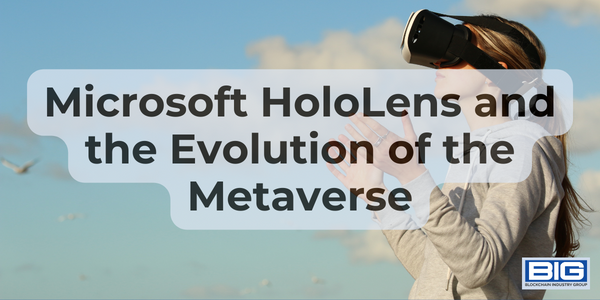
In recent years, the concept of the metaverse has gained increasing attention as a digital frontier that promises immersive and interconnected virtual experiences. Among the technological advancements driving this evolution, Microsoft HoloLens has emerged as a significant player.
In this in-depth article, we will explore how Microsoft HoloLens has revolutionized augmented reality (AR), reshaped industries, and played a pivotal role in the evolution of the metaverse. From its groundbreaking features to its impact on various sectors, we will examine the key elements that have positioned Microsoft HoloLens as a trailblazer in shaping the future of the metaverse.
A Glimpse into the Future: Introducing Microsoft HoloLens
Microsoft HoloLens, first unveiled in 2015, introduced the world to a new era of AR technology. This groundbreaking headset combines advanced sensors, cameras, and holographic displays to overlay virtual objects onto the real world, creating a seamless blend of digital and physical realities. Unlike virtual reality (VR) devices that transport users to entirely computer-generated environments, Microsoft HoloLens enables users to interact with holograms within their real-world surroundings. This innovation opened up a realm of possibilities for the metaverse, bridging the gap between virtual and physical worlds.
Revolutionizing Industries: Applications Beyond Gaming
While gaming has often been at the forefront of discussions around the metaverse, Microsoft HoloLens has demonstrated that its impact extends far beyond entertainment. The technology has been embraced by various industries for its potential to transform workflows, enhance productivity, and revolutionize training. Examples include:
- Architecture and Design: HoloLens allows architects and designers to visualize and manipulate virtual models within real-world spaces. It enables stakeholders to experience buildings and spaces before construction begins, leading to more informed decision-making and streamlined design processes.
- Manufacturing and Engineering: HoloLens is being leveraged in manufacturing and engineering sectors to improve assembly processes, aid in equipment maintenance and repair, and enable remote collaboration. Workers can access digital instructions and data overlayed on physical machinery, leading to increased efficiency and reduced downtime.
- Healthcare and Medicine: HoloLens has found applications in healthcare, enabling surgeons to visualize patient data, plan complex procedures, and navigate intricate anatomical structures in real-time. Medical training and education have also been transformed, with students able to interact with realistic 3D models of the human body.
Enabling Shared Experiences: Microsoft HoloLens and Collaborative AR
Collaboration and shared experiences are integral to the metaverse, and Microsoft HoloLens has been instrumental in facilitating these interactions. Through its Spatial Mapping and Mixed Reality Capture capabilities, multiple HoloLens users can see and interact with the same virtual objects within a shared physical space. This technology has opened up possibilities for remote collaboration, virtual meetings, and immersive social interactions. Users can engage with holographic content, manipulate objects together, and communicate in real-time, regardless of their physical locations.
Recent Developments with Microsoft Hololens
- Microsoft has announced a new version of Hololens, called Hololens 2. Hololens 2 is a significant upgrade over the original Hololens, with a number of new features and improvements. These include a more powerful processor, a wider field of view, and improved hand tracking.
- Microsoft is also working on a new version of its mixed reality platform, called Windows Mixed Reality 2. Windows Mixed Reality 2 is designed to make it easier for developers to create mixed reality experiences. It includes a number of new features and tools, such as a new development kit and a new app store.
- Microsoft is also working on a number of new applications for Hololens. These include applications for education, healthcare, manufacturing, and retail. For example, Hololens is being used to help students learn about anatomy, to help surgeons perform surgeries, and to help factory workers assemble products.
10 Unexpected Consequences from the Metaverse
—
20 Augmented Reality & Virtual Reality Use Cases
—
A New Reality: Rise of the Metaverse
The Future of the Metaverse: Microsoft HoloLens’ Role
As the metaverse continues to evolve, Microsoft HoloLens remains at the forefront of driving its advancement. The technology’s capabilities, such as its ability to seamlessly blend digital and physical realities, support collaborative experiences, and find applications across industries, position it as a key player in shaping the future of the metaverse. Microsoft’s ongoing commitment to innovation and the development of HoloLens’ successors will further push the boundaries of what is possible within the digital frontier.
As the metaverse continues to expand, Microsoft HoloLens is poised to play a crucial role in shaping its future, pushing the boundaries of what is possible within this digital frontier. With its commitment to innovation and advancements in AR technology, Microsoft is poised to lead the way in unlocking the full potential of the metaverse and revolutionizing the way we interact with digital content and the world around us. The journey to the metaverse has only just begun, and Microsoft HoloLens stands as a powerful tool that is propelling us towards a future of immersive and interconnected virtual experiences.



